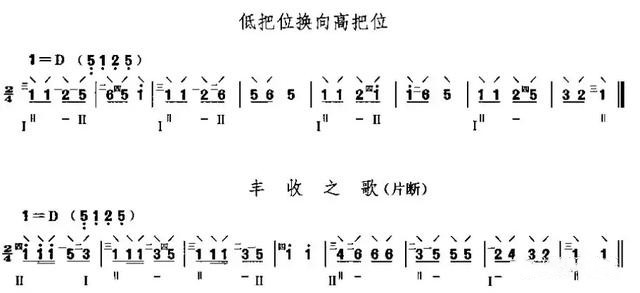Swapping skills of the pipa
Changing the handle of the pipa is an important part of the process of playing the pipa. If the handle cannot be changed smoothly, it may cause interruptions in the performance of the pipa music, and the sound is blunt. So today I will talk to you about the pipa changing skills.

Swapping is the connection action when switching from one position to another, and it is divided into upward switching and downward switching. The downshift is to switch from the bass position of the lute to the treble position. Shifting up is to switch from the treble position of the pipa to the bass position. When changing the handle, the big finger should change the handle position with the movement of the hand. Don't let your fingers "jump" off the strings to the next position (except for the jump switch). Use your fingers to "slide" down the next fret. The index finger is used as the positioning finger, no matter which position you switch to, you should know the position of the index finger. The big finger is relaxed, and the left hand should maintain the basic pressing hand shape without excessive twisting. The shoulders, upper arms, forearms, wrists, hands and other parts are all involved in the movement.
Tips for changing the handle of the pipa
Switch from low handle to high handle
After playing the last note before the switch of the lower frets, release the pressure on the strings with the pressing fingers, and at the same time slide the hands to the upper frets with the wrist, and press the corresponding fingers on the correct frets.
High handle position switch to low handle position
After playing the last note before the switch of the high frets, release the pressure on the strings with the fingers that press the tone, and at the same time slightly raise the wrist to bring the hand to the low fret, and press the corresponding fingers on the correct fret.
Etude for change

Common types of handlebars
empty string changer
Between the two handlebars, there is an open string. Play the open strings with your right hand and switch bars with your left. When changing the handle, the big finger supports the body of the piano, and the other four fingers leave the strings. After changing to the next handle, press the corresponding fret again.
same finger switch
The last finger pressing the sound before changing the handle is the same as the finger pressing the first sound after changing the handle. Be careful not to leave the strings while pressing your finger when changing the handle.
finger switch
The last finger pressing the sound before changing the handle is different from the finger pressing the first sound after changing the handle. After playing the last note before changing the frets, release the pressure on the string with the finger pressing the note but do not leave the string body, then use the wrist to bring the hand to the next position, and press the corresponding fret with the other finger.
 渝公网安备 50010702504639号
渝公网安备 50010702504639号